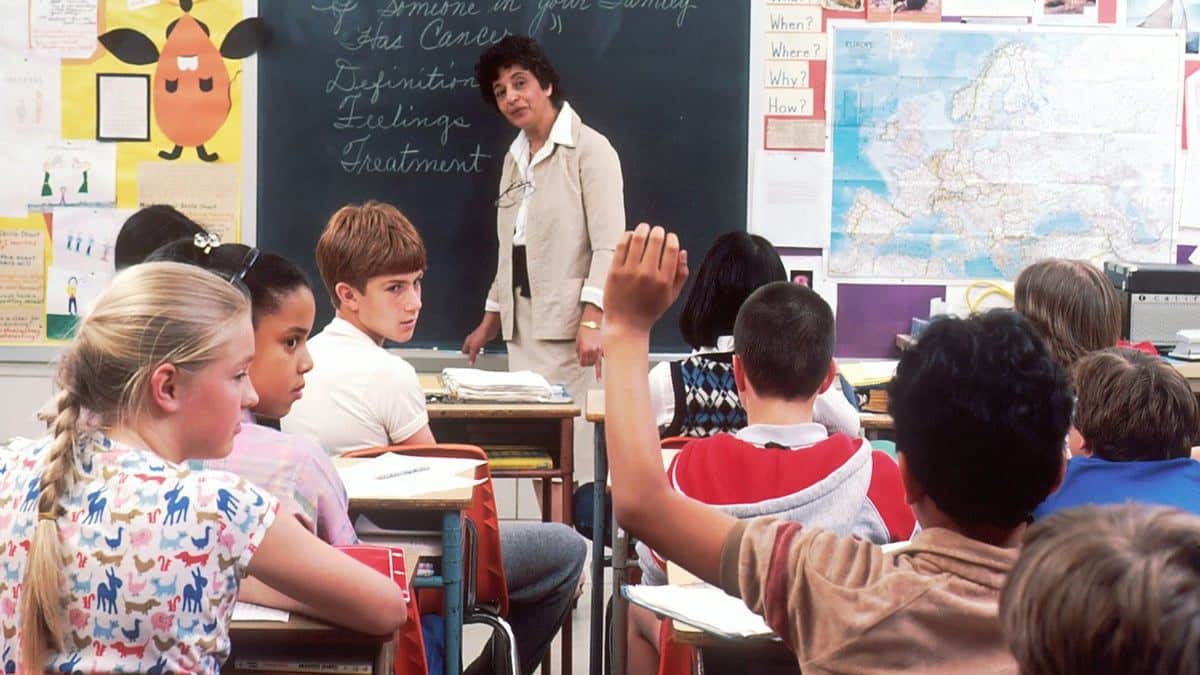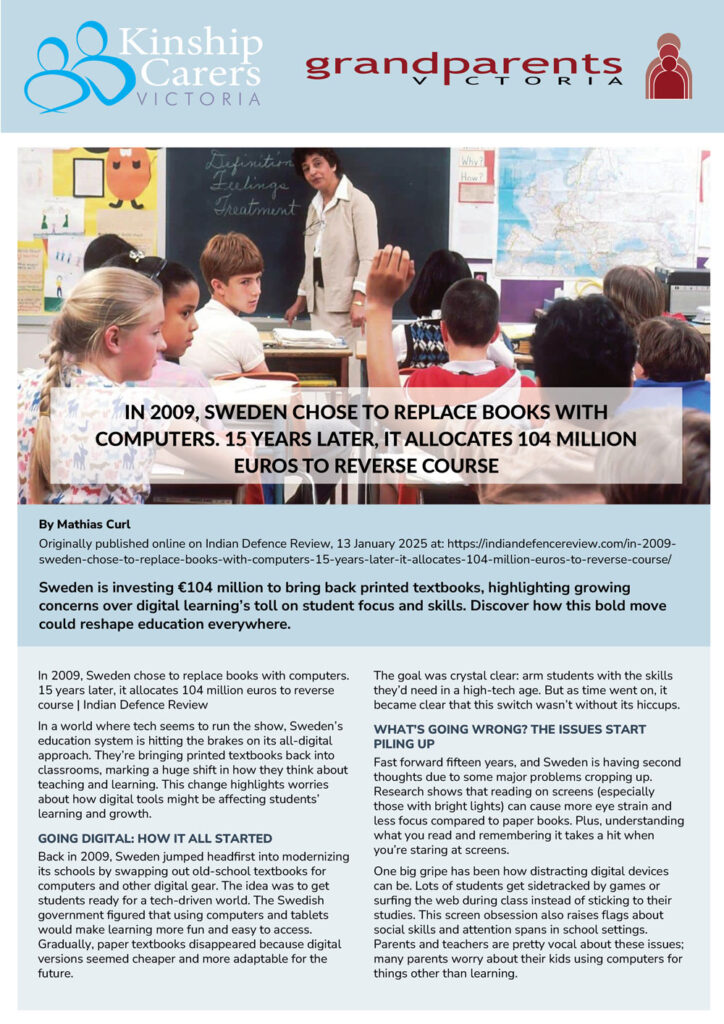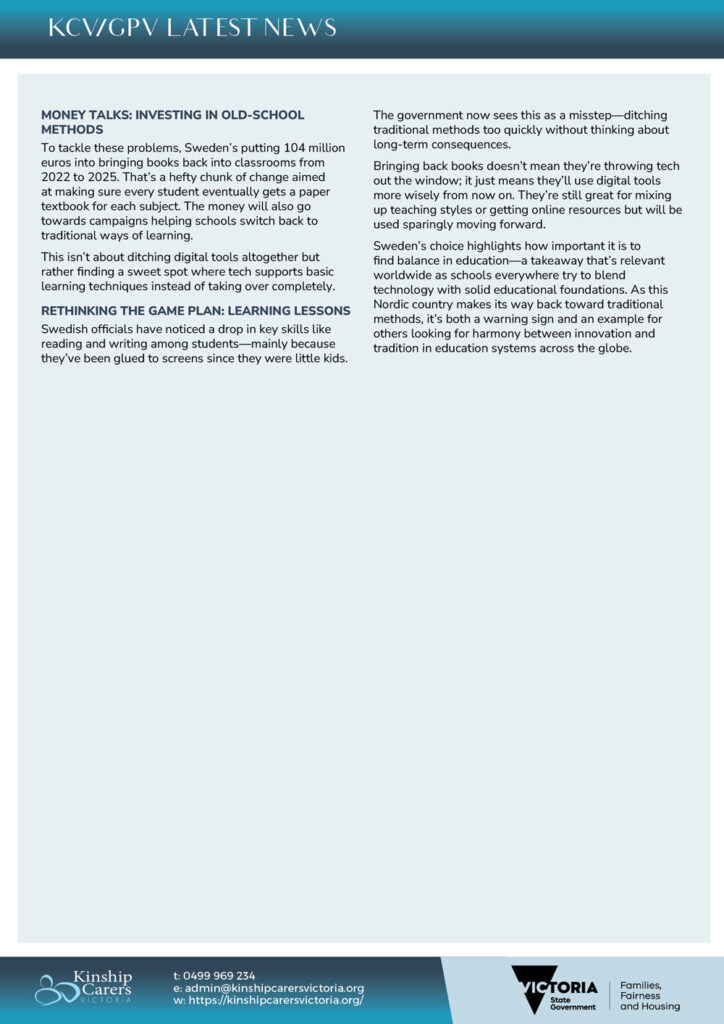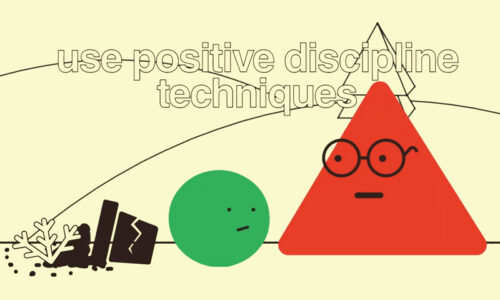
GPV/KCV applauds Sweden’s move to reduce “screen learning”.
By Mathias Curl
Originally published online on Indian Defence Review, 13 January 2025 at: https://indiandefencereview.com/in-2009-sweden-chose-to-replace-books-with-computers-15-years-later-it-allocates-104-million-euros-to-reverse-course/
Sweden is investing €104 million to bring back printed textbooks, highlighting growing concerns over digital learning’s toll on student focus and skills. Discover how this bold move could reshape education everywhere.
In 2009, Sweden chose to replace books with computers. 15 years later, it allocates 104 million euros to reverse course
In a world where tech seems to run the show, Sweden’s education system is hitting the brakes on its all-digital approach. They’re bringing printed textbooks back into classrooms, marking a huge shift in how they think about teaching and learning. This change highlights worries about how digital tools might be affecting students’ learning and growth.
Going digital: How it all started
Back in 2009, Sweden jumped headfirst into modernizing its schools by swapping out old-school textbooks for computers and other digital gear. The idea was to get students ready for a tech-driven world. The Swedish government figured that using computers and tablets would make learning more fun and easy to access. Gradually, paper textbooks disappeared because digital versions seemed cheaper and more adaptable for the future.
The goal was crystal clear: arm students with the skills they’d need in a high-tech age. But as time went on, it became clear that this switch wasn’t without its hiccups.
What’s going wrong? The issues start piling up
Fast forward fifteen years, and Sweden is having second thoughts due to some major problems cropping up. Research shows that reading on screens (especially those with bright lights) can cause more eye strain and less focus compared to paper books. Plus, understanding what you read and remembering it takes a hit when you’re staring at screens.
One big gripe has been how distracting digital devices can be. Lots of students get sidetracked by games or surfing the web during class instead of sticking to their studies. This screen obsession also raises flags about social skills and attention spans in school settings. Parents and teachers are pretty vocal about these issues; many parents worry about their kids using computers for things other than learning.
Money talks: Investing in old-school methods
To tackle these problems, Sweden’s putting 104 million euros into bringing books back into classrooms from 2022 to 2025. That’s a hefty chunk of change aimed at making sure every student eventually gets a paper textbook for each subject. The money will also go towards campaigns helping schools switch back to traditional ways of learning.
This isn’t about ditching digital tools altogether but rather finding a sweet spot where tech supports basic learning techniques instead of taking over completely.
Rethinking the game plan: Learning lessons
Swedish officials have noticed a drop in key skills like reading and writing among students—mainly because they’ve been glued to screens since they were little kids. The government now sees this as a misstep—ditching traditional methods too quickly without thinking about long-term consequences.
Bringing back books doesn’t mean they’re throwing tech out the window; it just means they’ll use digital tools more wisely from now on. They’re still great for mixing up teaching styles or getting online resources but will be used sparingly moving forward.
Sweden’s choice highlights how important it is to find balance in education—a takeaway that’s relevant worldwide as schools everywhere try to blend technology with solid educational foundations. As this Nordic country makes its way back toward traditional methods, it’s both a warning sign and an example for others looking for harmony between innovation and tradition in education systems across the globe.





